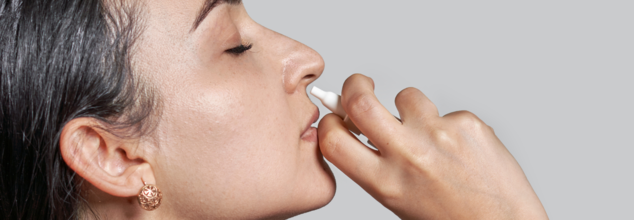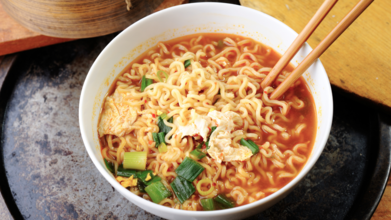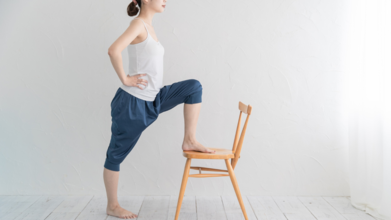- Health Conditions A-Z
- Health & Wellness
- Nutrition
- Fitness
- Health News
- Ayurveda
- Videos
- Medicine A-Z
- Parenting
- Web Stories
FDA Approves ‘Spravato’ Nasal Spray As A Standalone Depression Treatment

(Credit-Canva)
Educating people about the importance of mental health has been one of the best steps taken. Not so long ago, people did not believe in depression, let alone treat people who have depression correctly. But in recent years we have seen a rise in people who are taking mental health more seriously and working towards making their lives and the people around them better. We also have reached a point where we have medication and treatment options for not just people with depression, but anxiety, BPD, schizophrenia etc. And now FDA has broadened the variety of medicines that are available to people to fight depression! The U.S. Food and Drug Administration (FDA) has broadened its approval for Johnson & Johnson's nasal spray, Spravato esketamine, allowing its use as a monotherapy for severe depression, as announced by the company on Tuesday. This decision marks a significant development in the treatment landscape for individuals with major depressive disorder (MDD).
Spravato was first approved in 2019 to be used with regular antidepressants for people whose depression wasn't getting better with other medicines. It was like an extra treatment that acted almost like a strengthener. Later, it was also approved for people who were thinking about suicide or hurting themselves, because it can work quickly in those urgent situations. Now, doctors can give Spravato by itself, without the person having to take a regular antidepressant pill too. This is a big change and gives doctors and patients more choices.
What This Means For Patients
Experts suggest that with this approval they can now make more personalized medicine for their patients, as we know, everyone takes medicine differently and there is no one-way street for treatment. Doctors now have more ways to treat depression. Some people might do better with just Spravato, while others might still need other medicines too. This personalized way of treating people is really important because everyone's different. This change lets doctors choose the best treatment based on what each person needs, which could help people get better faster.
What Measures Have Been Taken For Patient Safety?
The FDA approved Spravato for use on its own because studies showed it works well in this way. People who used Spravato got better faster than those who didn't in clinical trials. The medicine works on a chemical in the brain called glutamate, which is involved in mood regulation. Spravato is related to ketamine, which is sometimes used illegally as a recreational drug. While both affect glutamate, they are not identical. The clinical trials provided the necessary evidence for the FDA to expand the drug's approved use.
Because Spravato has the potential for misuse and some side effects, it's only available through a special program called a REMS which is the Risk Evaluation and Mitigation Strategy program. The process here is that people who will be given the dose of medicine will be kept under close supervision. The doctors will check on them and their vitals every two hours and see how well the patients were responding to the medicine. This is to make sure it's used safely and to monitor for any adverse reactions, sometimes people don’t respond well to medication, it can also be dangerous if it reacts differently to others. The REMS program is a key part of ensuring patient safety and responsible use of this medication. This controlled distribution system helps to minimize the risk of misuse and ensures proper medical supervision.
Cardiologist Explains Daily Use Of This Substance Can Increase Your Risk Of Stroke

(Credit-Canva)
Even though cannabis (marijuana) has become popular as a medicine—helping with things like long-lasting pain, nausea from cancer treatment, and certain appetite problems—experts are pointing out that using it often comes with serious health risks that many people don't know about. We're talking about risks to your heart and brain that people tend to ignore, especially as the strength of marijuana's active ingredient, THC, keeps increasing.
Does Cannabis Increase Your Heart Risk?
A cardiologist named Dr. Dmitry Yaranov warns that we've known the dangers of tobacco and alcohol for a long time, but cannabis somehow hasn't been looked at as closely. He recently shared that new research confirms what doctors are seeing: using cannabis every single day can significantly raise your chances of having serious heart problems.
The potential dangers from this daily habit include a higher risk of heart attacks and strokes, and it could even double your risk of dying from heart disease. Dr. Yaranov isn't arguing about whether cannabis should be legal; he's arguing that based on the facts, doctors need to start asking patients about their cannabis use and treat it as a serious risk factor, especially for young adults.
Other Health Concerns with Cannabis
The dangers of regular cannabis use aren't just limited to the heart. It can also hurt your brain and thinking abilities. The chemicals in marijuana, called cannabinoids, affect how your brain sends signals. In the short term, this can mess up your memory.
If you use it chronically (all the time), the memory problems get worse. You might also notice that you think more slowly, have trouble paying attention, and just generally put in less effort at tasks. Basically, regular use can cause lasting problems with how well your brain works.
According to the National Institute on Drug Abuse, many people use cannabis (marijuana) for various reasons, it's important to be aware of the potential negative effects it can have on your body and mind. Research has highlighted several areas where frequent or long-term use may cause harm.
Mental Health Concerns
Cannabis use has been found to have a link with certain mental health conditions. If you're using cannabis, it's worth learning more about this connection and how it might affect your psychological well-being.
Risks to Your Heart and Blood Vessels
Right after you use cannabis, your heart rate and blood pressure can increase immediately. Some studies also show a concerning association between long-term use and a higher risk of serious cardiovascular events, including stroke, heart attack, and irregular heart rhythms (arrhythmias). However, researchers still need to do more work to figure out if cannabis directly causes these heart problems or if other factors are involved.
Stomach and Digestive Issues
Heavy, long-term cannabis use can lead to serious digestive problems. One notable condition is Cannabinoid Hyperemesis Syndrome (CHS), which causes severe and repeated episodes of nausea, vomiting, and abdominal pain. Other potential issues affecting the gut include acid reflux, inflammation of the pancreas (pancreatitis), and stomach ulcers (peptic ulcer disease).
Possible Cancer Risk
Research has suggested a link between using cannabis products and an increased chance of developing cancers of the head, neck, or throat. This risk is especially noted in people who smoke cannabis.
How Many Times Can You Safely Eat Ramen? Study Linked Frequent Consumption To Early Death

(Credit-Canva)
Ramen is one of the top trending foods in the world currently. While many people attribute this rise to K-dramas, others argue that the addictive nature of the noodles has slowly helped the ramen brands solidify themselves all over the world.
However, as tasty as these meals are, a new study has found that too much ramen could actually affect your health in a profound way.
A new study from Japan has found a potential link between eating ramen frequently and a higher risk of early death. The research, which was published in the Journal of Nutrition, Health and Ageing, surveyed more than 6,500 people over 40 years old, tracking them for about 4.5 years.
The study found that participants who ate ramen three or more times a week were more likely to be younger men who smoked, drank alcohol, and were overweight. During the study period, 145 people died, and most of these deaths were due to cancer and heart disease. The researchers concluded that frequent ramen intake may be linked to a greater death risk, particularly in men under 70.
Who Eats The Most Ramen?
The study found that the people who ate ramen three or more times a week generally had other habits and health factors that put them at higher risk. These frequent ramen eaters were more likely to be:
- Men
- Younger (under 70)
- Smokers and alcohol drinkers
- More likely to have diabetes or high blood pressure (hypertension)
- More likely to drink half or more of the salty noodle soup
Why Is Ramen So Unhealthy ?
Ramen noodles are one of the most popular foods in Japan, but the main concern is the very high salt content in the noodles and especially the soup. The average salt intake in Japan is already higher than recommended targets.
We already know that eating too much salt is bad for you. It's a major cause of serious health problems like stroke (a brain attack) and stomach cancer. The study on ramen suggests that when you eat it often, you're likely taking in a large amount of salt (sodium). This high sodium intake is what increases your risk for these dangerous, salt-related diseases, which can sadly lead to an earlier death.
It's important to understand what the study did not prove. This was an observational study, meaning researchers only watched a group of people and tracked their habits and health outcomes.
It found a connection between frequent ramen eating and a higher risk of death, but it did not prove that ramen is the direct cause. Think of it like this: the study didn't prove the ramen itself is a poison; it just showed that people who ate a lot of ramen were more likely to get sick.
The researchers also noticed that the people who ate ramen frequently often had other risky behaviors, like smoking and heavy drinking. It's very possible that these other unhealthy habits are a big part of the increased risk.
Can Ramen Increase The Risk Of Mortality?
The study suggests that the answer is "Yes, for certain people." If you're a younger man who eats ramen very often and you tend to drink the salty soup and also consume alcohol, you may face a significantly higher risk.
The main takeaway is a common-sense reminder: be more mindful of how much high-sodium, high-fat food you eat. To lower your risk, the best thing you can do is to limit how often you eat ramen and, most importantly, avoid drinking the salty soup to drastically cut your sodium intake.
Ultimately, the researchers advise everyone to look at their own health—their individual health profile—and adjust how much ramen they eat accordingly.
6 At-Home Heart Health Tests You Should Do To Test How Good Your Cardiovascular Health Is, According To Doctor

(Credit-Canva)
When it comes to testing for diseases, many people do not get them done regularly, whether it is due to the cost or due to lack of time. However, when it comes to diseases like heart diseases, high blood sugar levels etc., many times you do not recognize the signs until it is too late. So, if you wish to know whether your heart is healthy or not, how can you do it?
If you are worried about the rising costs and do not know which tests to get, you can do some at-home tests that reveal the state of your heart.
At Home Tests That Reveal Your Heart Health
In a recent post, Dr Sudhir Kumar, a Hyderabad-based Neurologist, revealed a few tests you can conduct at home.
Resting Heart Rate (RHR)
Your Resting Heart Rate (RHR) is how fast your heart beats when you are completely at rest, and it's a straightforward measure of how efficiently your cardiovascular system is working. To check it, simply sit quietly for 5 minutes, then find your pulse and count the beats for a full 60 seconds.
A normal, healthy range is between 50 and 70 beats per minute (bpm). If your RHR is consistently above 80 bpm, it acts as a warning sign, suggesting your heart is working harder than it needs to and may indicate a higher future risk for heart problems. A lower, steady resting rate generally points to better heart health and physical fitness.
Three-Minute Step Test
The Three-Minute Step Test assesses your heart's ability to recover after a short burst of exercise, which is a great reflection of your overall cardiovascular fitness. To perform this, you need to step up and down a 12-inch step at a steady, consistent pace for a full 3 minutes. As soon as you finish, sit down and measure your pulse 1 minute later.
We look for a significant drop in your heart rate: a drop of more than 30–40 bpm from your maximum rate is a sign that your heart recovers quickly and that you have good fitness. If your heart rate drops by less than 20 bpm, it suggests your recovery is slower, which is a sign of lower fitness and a potentially higher risk.
Grip Strength
Grip strength is a simple but surprisingly powerful indicator of your overall body strength, and research shows it's also directly linked to your cardiovascular health, even independently of how fit you look. Ideally, you would use a hand dynamometer to measure the force in your hand, recording the best result out of three tries.
Generally, if your grip is stronger than that of your peers, you are associated with a lower risk of heart disease. Conversely, weak grip strength is considered a standalone warning sign for higher cardiovascular risk, making it an easy way to screen for potential issues.
Chair Stand Test (Sit-to-Stand)
The Chair Stand Test measures the strength in your lower body, which is vital for everyday mobility, preventing frailty, and is a strong predictor of overall health and longevity. The test is easy: sit on a chair with your arms crossed over your chest, and see how many times you can stand up and sit down completely in 30 seconds.
The goal scores vary slightly by age and gender; for example, men under 60 should aim for 20 or more times, and women under 60 should aim for 17 or more. A low count relative to these goals suggests reduced lower body strength, indicating a higher risk of frailty and potential negative heart-related events down the line.
Push-Up Test (for Trained Adults <60)
The Push-Up Test is a measure of upper body muscular endurance and strength, and for trained adults under 60, it can be used to help predict long-term cardiovascular health. The goal is to do as many standard push-ups as you can in one set without stopping.
The results are quite telling: men who can complete more than 40 push-ups are associated with a very low risk of heart disease. On the other hand, if you can complete fewer than 10 push-ups, it acts as a serious warning sign, suggesting a higher cardiovascular risk that you should address through increased activity.
One-Leg Balance Test
The One-Leg Balance Test is a simple yet powerful measure of both your physical stability and your brain and vascular health. To perform it, simply stand on one leg with your arms at your sides and your eyes open, timing how long you can maintain your balance.
Being able to hold the pose for 10 seconds or more indicates good coordination and is associated with healthy brain and blood vessel function. If you can balance for less than 10 seconds, it's a significant finding that has been linked to a higher risk of future stroke and overall mortality.
How to Interpret and Use Your Scores
Higher scores and "check" results are good news they suggest a lower risk of future heart attack and stroke.
Lower scores and "warning" results are a sign that you have an opportunity to make positive changes. These results are not destiny, but a clear chance to improve your fitness and lifestyle.
- Combine this information with standard professional health checks:
- Regular blood pressure check
- Screening for blood sugar and cholesterol
- Commitment to healthy habits (balanced diet, regular exercise, no smoking, and stress management)
© 2024 Bennett, Coleman & Company Limited

